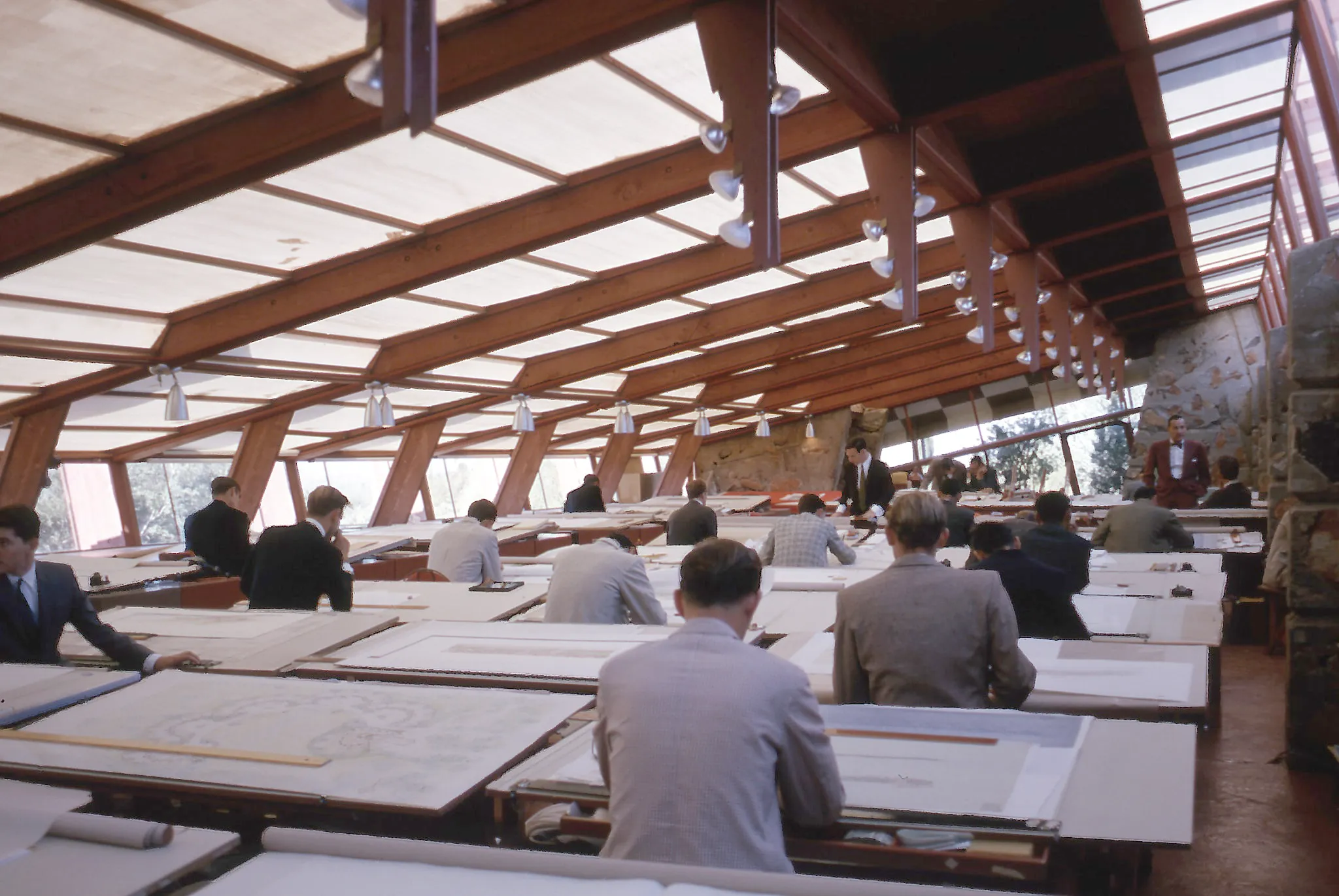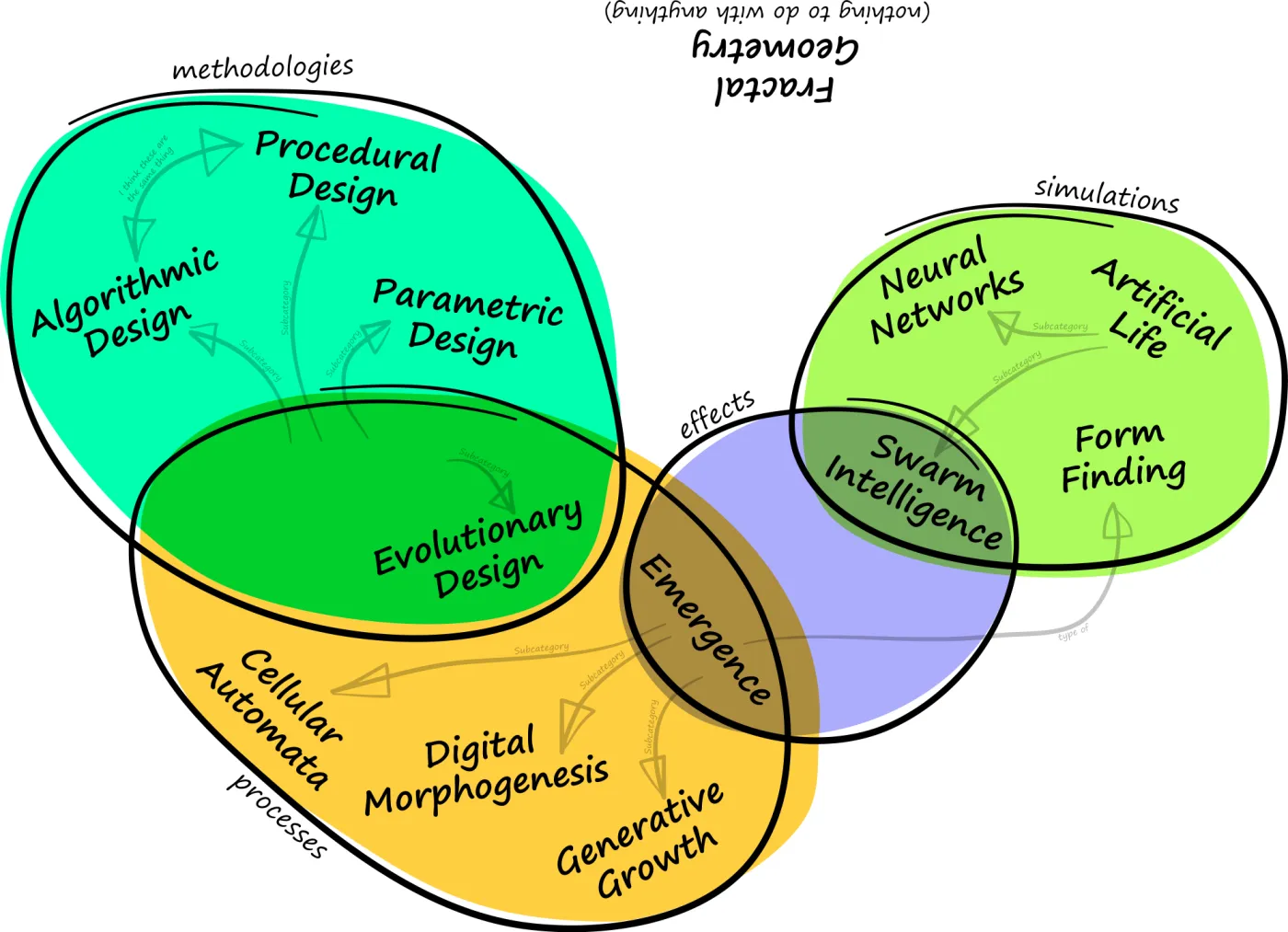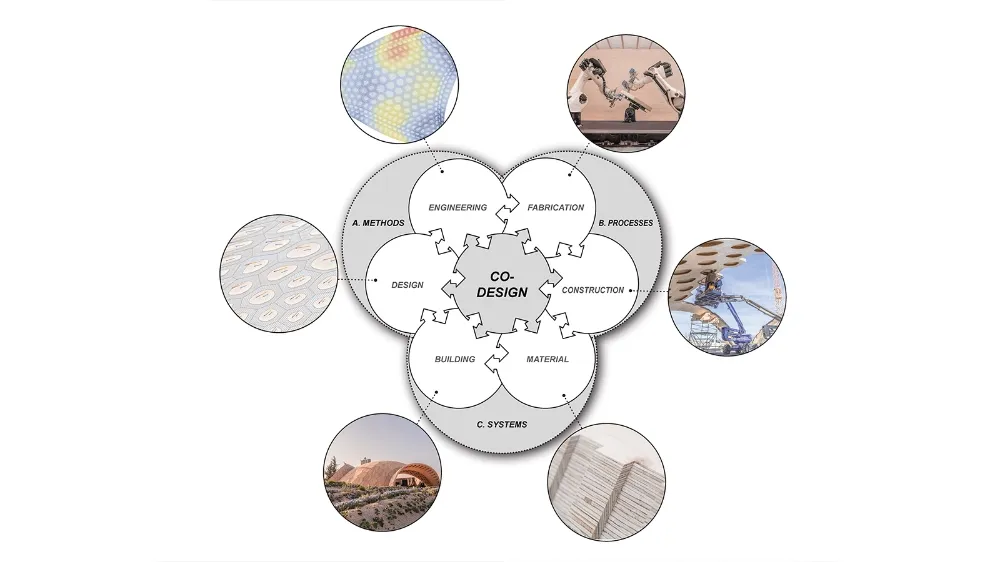Computational Design
Making the world’s available resources serve one hundred percent of an exploding population can only be accomplished by a boldly accelerated design revolution.
Buckminster Fuller
Introduction
Section titled “Introduction”In the past, an architectural project relied on individual and disconnected drawings made by hand. With the emergence of computers and CAD platforms in the 1960s, what happened was simply the digitalization of a process that was still very artisanal. In other words, instead of drawing with paper and ink, the architect did the same process with the mouse and keyboard. He did not take advantage of the real potential of these new technologies.
 © Frank Lloyd Wright Foundation
© Frank Lloyd Wright Foundation
Tools like AutoCAD do not allow effective collaboration between architects, engineers, and specialists. Each design is independent, which generates several inconsistencies in the project.
 © MIT
© MIT
With the popularization of Building Information Modeling (BIM), especially ArchiCAD and Revit, the issue of collaboration and organization of project data began to be finally resolved. Now when representing a wall, the architect does not just make two parallel lines as was done on paper or in AutoCAD.
In BIM, a wall is a three-dimensional element with properties shared by everyone involved, facilitating, for example, structural calculations and surveying the quantity of bricks and paint needed for construction.
Despite bringing several benefits, BIM tools did not represent a renewal in the design and construction process. Just as CAD digitized the hand drawing, BIM digitized and optimized the artisanal construction process.
Automated processes are gradually replacing the artisanal brick-by-brick construction methodology. The climate and housing crisis are significant catalysts for this transformation. The question is not whether these current construction methods will end, but when. Consequently, developing new design practices that use resources rationally and simultaneously accelerate production will be essential to meet the growing demand for new buildings.
Computational Design
Section titled “Computational Design”Parametric Design, Algorithmic Design, Generative Design, Computational Design
If you don’t know what these terms mean, don’t worry! These are relatively new terms, there is no consensus on their definitions. Here we will use the most accepted scientific term: computational design.
 © David Rutten
© David Rutten
Problem with these terms is that they are over-used and over-hyped. I’m not even sure what all these terms mean exactly, their usage is often so ambiguous. Without checking the official definitions, I drew a small map from how I understand these terms. I think you could pretty much keep on drawing arrows until all terms are connected to all other terms. The only thing I don’t see is how fractal geometry fits into all this.
David Rutten
Computational design refers to the process in which the designer, architect or engineer uses the real power of the computer. In short, instead of developing a product or an architectural project traditionally, he programs it.
However, architects and designers are not trained to be programmers; schools mainly focus on improving creative, critical, and spatial intelligence. With this audience in mind, David Rutten developed Grasshopper, a plugin for the Rhinoceros software. Grasshopper is a visual programming tool where the designer develops programs simply by connecting blocks of code without needing to learn textual languages such as Python or C#.
 © ICD/ITKE University of Stuttgart
© ICD/ITKE University of Stuttgart
There are several benefits when creating a project through programming; it is possible to integrate structural and environmental data, standards, and laws into the same algorithm. You can, for example, carry out the structural calculation of a building and, based on the results, automatically generate an optimized version of the project. Computational design can integrate many disciplines around architecture, from design to construction and disassemble, turning the computer into an electronic brain instead of just electronic hands.
At first, the idea of learning to program may seem scary, but just as previous generations needed to learn how to use the keyboard in typing courses, the current generation will have to learn to program to keep up with new technologies. Or at least understand the potential of these new technologies to be able to dialogue and coordinate teams and copilots.
One of the coolest things about Grasshopper is its huge community. The old forum, which has now migrated to the Rhino forum, is full of interesting discussions. Your question has probably already been answered and is available on one of these forums. However, when starting to study computational design, it is easy to get lost in the sea of information available; the challenge is not about finding the answers; that is the easy part. The big challenge is knowing what questions to ask and how to search in English to find what you need.
In the same way that a first-year architecture student begins to identify architectural elements such as gable, arches and eaves, some solutions and algorithms start to repeat when studying computational design. When analyzing a project that uses computational design as a methodology, it is possible to identify the logic used during its development. I call this logic computational design strategy.
Here I present a compilation of strategies I have encountered over the ten years since I started my studies in this fascinating area! Everyone who begins to study computational design learns this compilation of information in one way or another. Some build libraries of links and files; others store them in their heads. However, this is information that everyone learns after many years of research.